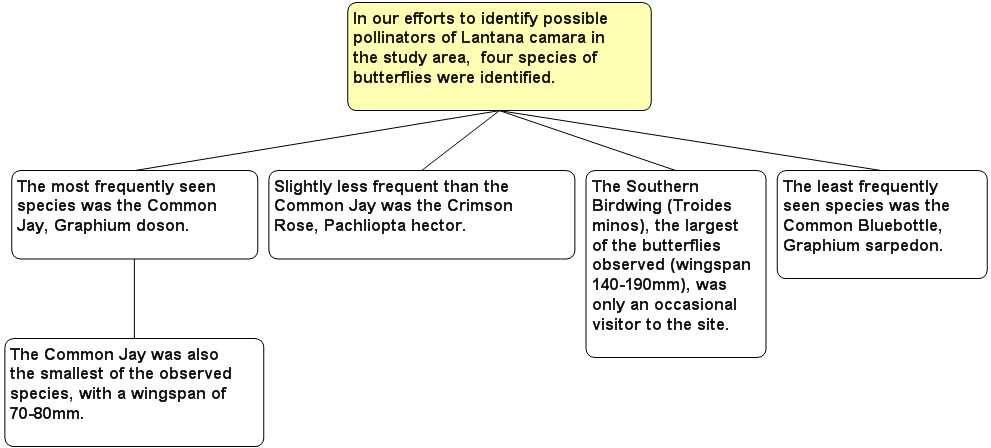The Science Of Scientific Writing Set A Intro to Paragraphs Features of Maps Examples of Maps Exercise 1 Quiz Diverse Organising Principles Example Exercise for Exercises 2-4 Exercise 2 Exercise 3 Exercise 4 Adding Non-core Content Exercise 5 Exercise 6 Exercise 7 *Exercise 8* Final Page.
OVERVIEW: The way to well-written science
PART I: Paragraphs and Sentences
SET A: Paragraphs: The Maps Behind Them
SET B: Paragraphs: Using Maps to Meet Readers' Expectations
SET C: Paragraph Coherence and Cohesion
SET D: Sentences
SET E: Scientific Sections (including Methods)
SET F: Scientific Sections: The Discussion
SET G : Scientific Sections: The Introduction
SET H : The Paper as a Whole
Model Answer for Exercise 2
Does your map look like this?
The primary Organising Principle is Report. The secondary Organising Principle is one of degree, in this case, frequency of observation. Size of wingspan cannot be used as a secondary Organising Principle, because it is only given for two of the species, and the sequence it would generate is in conflict with that suggested by frequency of observation.

Now close this window to return to the main Rationale browser
......